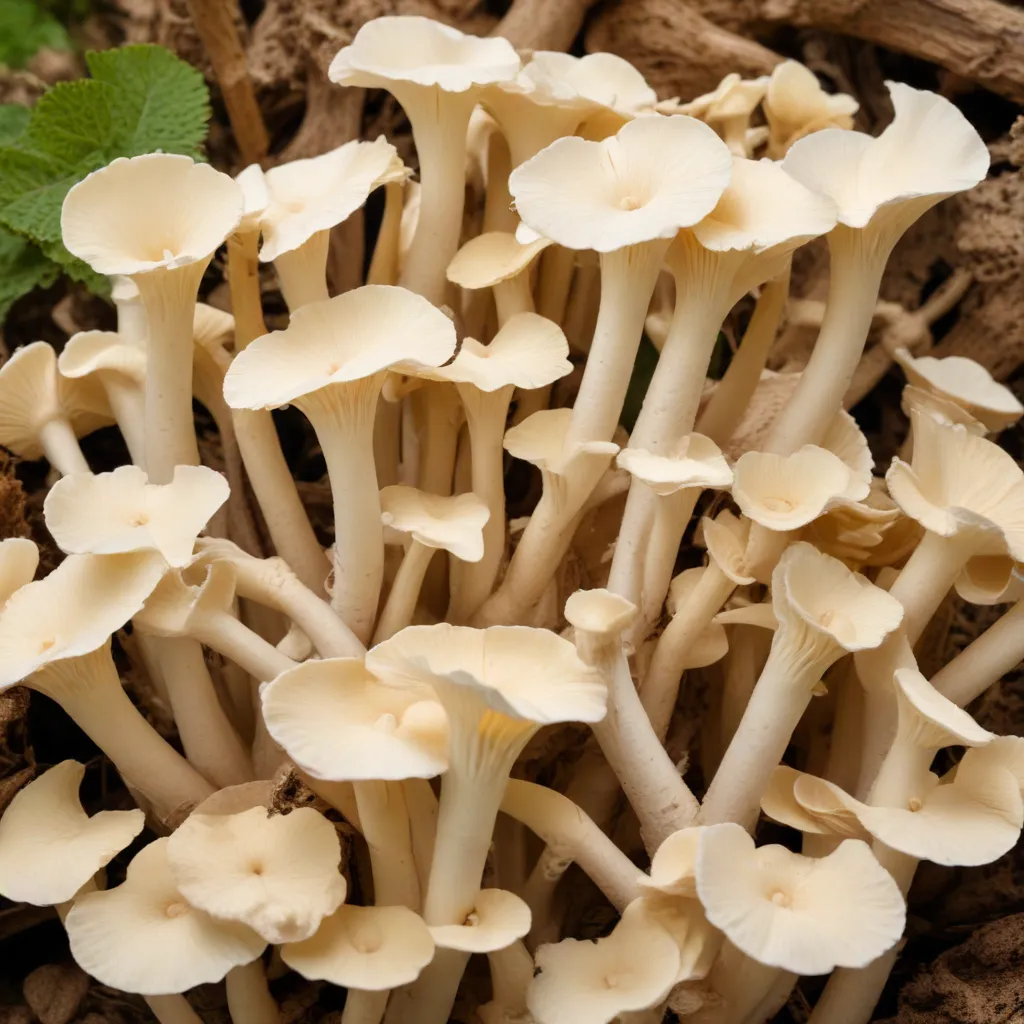
Antimicrobial Metabolites from Probiotics and Fungi
The rise of antibiotic-resistant microbes poses a serious threat to global health. However, nature has provided us with powerful antimicrobial weapons – the secondary metabolites produced by beneficial microorganisms. Probiotics and edible fungi are two such microbial powerhouses that harbor a wealth of bioactive compounds capable of inhibiting the growth of harmful pathogens.
Probiotics and Their Antimicrobial Metabolites
Lactic Acid Bacteria (LAB) and Bifidobacterium species are well-known probiotic microbes that play a crucial role in maintaining a healthy gut microbiome. These beneficial bacteria produce a diverse array of antimicrobial substances, including organic acids, bacteriocins, hydrogen peroxide, and biosurfactants, which can effectively suppress the proliferation of foodborne pathogens and opportunistic infections.
The organic acids secreted by LAB, such as lactic acid and acetic acid, create an unfavorable acidic environment that inhibits the growth of many undesirable bacteria. Certain LAB strains also produce bacteriocins – ribosomally synthesized antimicrobial peptides that can selectively target and kill closely related microbial species. Additionally, the hydrogen peroxide generated by some probiotic bacteria possesses potent antibacterial and antifungal properties.
Bifidobacterium species are known to produce a variety of exopolysaccharides that can act as prebiotics, selectively promoting the growth of beneficial gut microbiota. These complex carbohydrates also exhibit direct antimicrobial effects against pathogenic bacteria, fungi, and viruses. Furthermore, Bifidobacteria secrete short-chain fatty acids, which can inhibit the adhesion and invasion of enteric pathogens.
Pleurotus ostreatus and Secondary Metabolites
The Oyster Mushroom (Pleurotus ostreatus) is a fascinating edible fungus with a rich array of bioactive compounds. This versatile macrofungus is known for its culinary, medicinal, and environmental applications.
The bioactive compounds found in Pleurotus ostreatus include polysaccharides (such as chitin and β-glucans), phenolic compounds, terpenoids, and lectins. These secondary metabolites exhibit a wide range of antimicrobial, antioxidant, anti-inflammatory, and immunomodulatory properties.
The polysaccharides in Pleurotus possess prebiotic properties, promoting the growth of beneficial gut bacteria while inhibiting the proliferation of harmful microorganisms. The phenolic compounds and terpenoids in the mushroom have been shown to possess potent antibacterial, antiviral, and antifungal activities against a variety of pathogens, including Staphylococcus, Escherichia, Candida, and Aspergillus species.
Interestingly, the spent mushroom substrate (the leftover material after harvesting the fruiting bodies) is also a rich source of bioactive compounds. These agricultural wastes can be repurposed as natural preservatives or antimicrobial agents in food, pharmaceutical, and agricultural applications.
Microbial Interactions and Synergistic Effects
The world of microbes is a complex and dynamic one, where cross-kingdom communication and synergistic interactions can yield remarkable antimicrobial effects. By harnessing the power of microbial co-cultures, researchers have discovered that the combined metabolites of probiotics and fungi can be even more effective in combating pathogenic microorganisms.
When probiotic bacteria and edible fungi, such as Pleurotus, are grown together, they can engage in metabolic cross-feeding, where one microbe’s byproducts become the other’s nutrients. This symbiotic relationship can lead to the production of a wider array of antimicrobial secondary metabolites, which can work in synergistic or additive ways to inhibit the growth of common foodborne pathogens and opportunistic infections.
Applications of Antimicrobial Metabolites
The antimicrobial potential of probiotic and fungal metabolites holds immense promise in various applications, including food preservation, pharmaceutical development, and agricultural biocontrol.
In the food industry, these natural antimicrobial compounds can be utilized as preservatives to extend the shelf-life of perishable products, reduce the risk of microbial contamination, and replace synthetic food additives. Furthermore, the prebiotic properties of Pleurotus polysaccharides and probiotic bacteria can contribute to the overall gut health of consumers.
In the pharmaceutical realm, the bioactive metabolites from probiotics and fungi are being explored as potential sources of new antibiotic candidates, with the advantage of potentially overcoming the challenges posed by antibiotic-resistant pathogens. These natural antimicrobials may also find applications in the development of antimicrobial wound dressings, antiviral therapies, and antifungal treatments.
In the agricultural sector, the antimicrobial and antifungal properties of probiotic and fungal metabolites can be harnessed for biocontrol applications. These natural compounds can be used to protect crops, livestock, and stored products from microbial spoilage and infections, reducing the reliance on synthetic pesticides and fungicides.
Ecological Roles of Antimicrobial Metabolites
The production of antimicrobial metabolites by probiotics and fungi is not just a boon for human applications; it also plays a crucial role in the microbial ecology of natural environments.
In the microbial niche, the antimicrobial compounds secreted by certain microorganisms can serve as a competitive advantage, inhibiting the growth of rival species and shaping the composition of the microbial community. This microbial chemical warfare is essential for the survival and dominance of beneficial microbes in their natural habitats.
Moreover, these antimicrobial metabolites can also function as signaling molecules in quorum sensing systems, allowing microbes to coordinate their behaviors and respond to changes in their environment. This intricate communication network among microbes is crucial for maintaining a balanced and resilient ecosystem.
In the broader environmental context, the antimicrobial properties of probiotic and fungal metabolites can contribute to the bioremediation of contaminated soils and waters, as well as the biocontrol of plant and animal pathogens in natural settings.
As we continue to explore the vast potential of probiotics and edible fungi, the antimicrobial metabolites they produce hold the key to addressing some of the most pressing challenges in food security, public health, and environmental sustainability. By harnessing the power of these natural microbial allies, we can pave the way for a more sustainable and healthier future.
